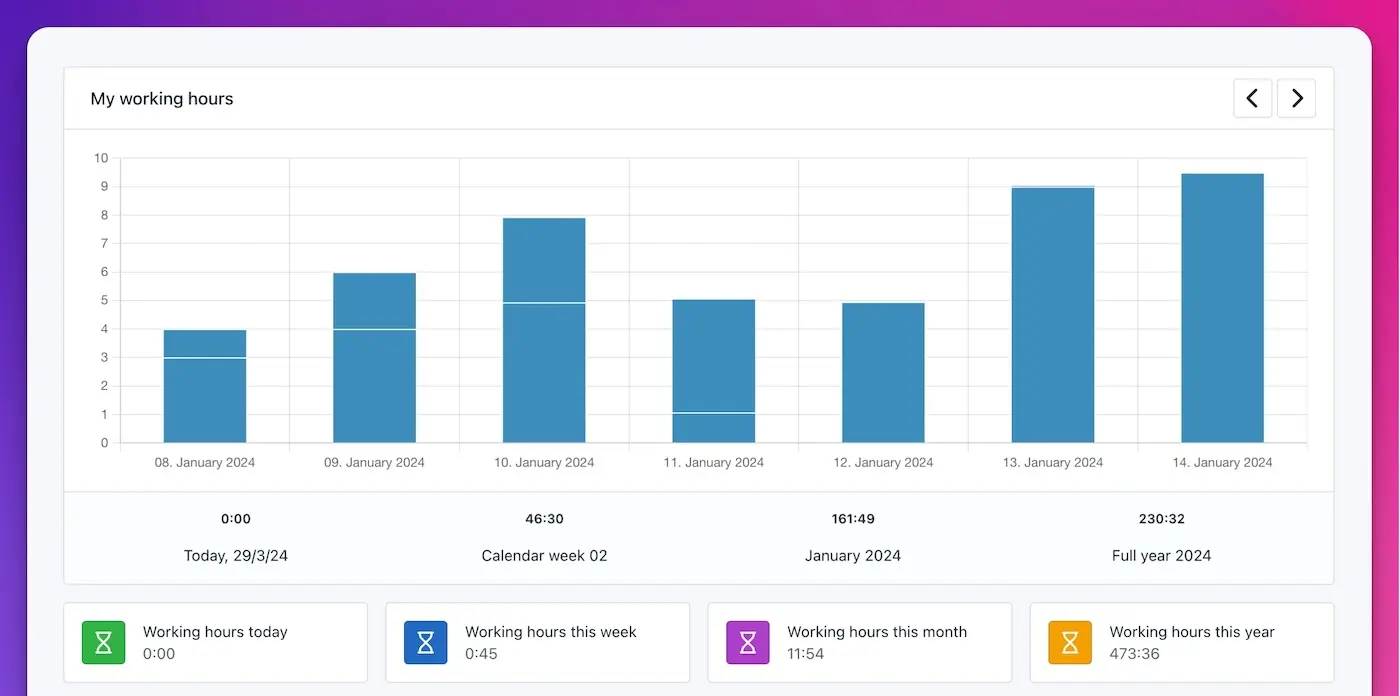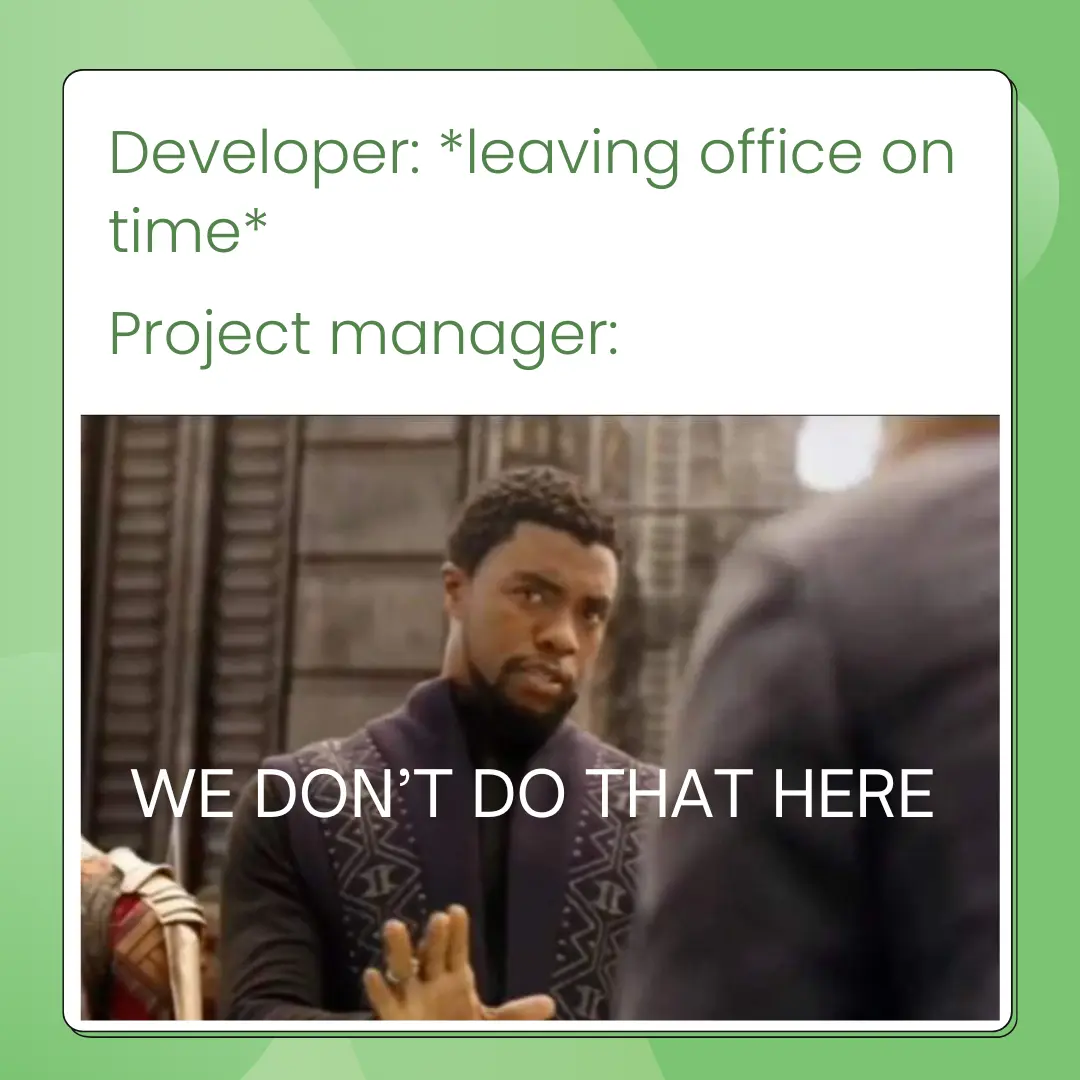10 Questions on Time Tracking and Timesheets Employers Ask

Valentina
@ivalentinaWe answer the most common — and sometimes secretly Googled — questions about time tracking and timesheets from business owners and decision-makers. If you’re setting up time tracking for your business or for your team, this is your go-to guide.
What is a timesheet?
A timesheet is a document or a digital form used to record and report the hours worked by an employee, including specific projects, tasks, or activities performed during their working time.
That’s an example of a weekly timesheet created in Kimai.

How to fill out timesheets? How do timesheets work?
Filling out a timesheet is straightforward: employees enter when they start and finish work, note any breaks, and log the time spent on different projects or clients.
This information is usually recorded daily and then totaled for weekly or monthly reports. The details required can vary by company, but the goal is always to capture where work hours are going — no crystal ball required.
Are timesheets just for tracking attendance?
Not at all! While timesheets in particular and time tracking in general do help track attendance, their real value is in showing how work hours are distributed across projects, clients, or departments.
This helps you see which projects are taking up the most time, which clients are most demanding, and where you might need to adjust resources. In short: timesheets are about smarter business decisions, not just clock-watching.
And to go even further, Kimai is also a project time-tracking tool. It records timesheets against projects with rates and those can be used for invoice creation.
How do you prevent timesheet fraud in your company?
Timesheet fraud — like inflating hours or “forgetting” breaks — can cost companies a lot. The best way to prevent it? Use reliable time tracking software. Regular reviews and a culture of transparency help, too.
Kimai has several protection features, like:
- punch-in and out mode: prevent that users enter times, but can only start and stop timesheets
- rules to prevent future timesheets: users cannot track when they are actively working, but not upfront
- a separate Kiosk plugin, which allows separate hardware devices to act as time-tracker via Barcode or NFC tokens
Remember at the same time: trust is good!
Are there legal requirements for time tracking?
Yes, and they’re getting stricter. Legal requirements for time tracking vary by country and industry. For example, in the EU, time-tracking became mandatory in 2024. Always check your local labor laws and industry regulations to ensure compliance.
Using a tool like Kimai, with features like audit trails and GDPR compliance, helps you stay on the safe side.
When does time tracking become mandatory in the EU?
If you’re doing business in the EU, you need to be aware: as of 2024, time tracking is mandatory for most employers.
The EU Time Tracking legislation requires accurate records of employee work hours. Kimai’s compliant features — like audit trails and GDPR-friendly data handling — make compliance easy.
Learn more on our blog post on EU Time Tracking Law
How can time tracking help with project management?
Time tracking isn’t just about payroll — it’s a project manager’s secret weapon. By tracking time spent on each task or project, you get real data for estimating future work, monitoring progress, and evaluating project profitability.
No more guessing if you’ll hit your deadlines or budgets, no more unrealistic time estimates!

What’s the best time tracking app or timesheet solution for business?
There’s no universal “best” app — it depends on your needs, budget, and user count. Some companies want a free or low-cost solution, others need self-hosting or cloud options, and some require advanced features or integrations.
Open source solutions like Kimai offer flexibility, privacy, and stability, making them a smart choice for businesses with unique requirements.
Is there really a 100% free time tracking software?
While some time tracking and productivity solutions claim to be 100% free, beware of hidden costs or limitations.
Free tools may lack support, features, or long-term updates — and some of them may monetize your data. Open source options like Kimai are transparent about their value and give you control over your data.
How to start tracking time in my business?
Start simple: try Kimai for free, log your time, and see how it fits your workflow. As an option, watch our quick tutorial on how to start with Kimai Cloud.
As your needs grow, explore features like reporting, integrations, and plugins.
Explore more:
Notes & Next Steps
Your time tracking set up successfully? Want to make timesheet reminders fun?
Use this meme picture to nudge your team (and lighten the mood).

Found this guide helpful? Follow us for more clarity about time in your business!
 Kimai
Kimai